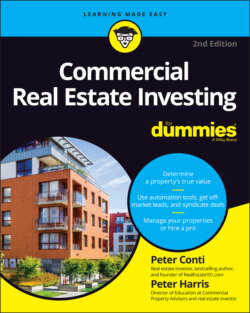Читать книгу Commercial Real Estate Investing For Dummies - Peter Harris - Страница 53
Not-so-obvious tips on analyzing
ОглавлениеWhen you’re analyzing any property, keep the following in mind:
Be leery of broker proformas. Proformas are brokers’ presentations of data on the property that reflect a best-case scenario or even a perfect-world situation. For example, even though the property may have eight unrentable vacant units, the broker proforma will reflect those units as if they were producing income. So, be careful in your analysis when you see the word proforma. It isn’t how the property is actually performing. Here’s the bottom line: Never make offers based on proforma data.
Look deeper into the price. When analyzing apartments, always look at sales price per door or price per unit. Get information on what local apartments have sold for recently on a price-per-unit basis. For example, if you know for a fact that the last three sales of comparable apartments on the same street sold for $45,000 per unit, then you know in your analysis that paying $65,000 per unit may be too much. Knowing your price per unit allows you to make quick decisions if the real estate agent is asking too much or if you’re getting a steal of a deal.
Not knowing expenses can cost you. One of the most understated and misunderstood aspects of property analysis is expenses. Of course, plugging actual and true operating expenses into your analysis isn’t easy, because often that data isn’t available.You’ll get your most reliable expense data from your property manager or from a professional property manager who manages similar properties, not from the broker. Look at property expenses in three different ways:Look at it in expenses per unit. Basically, divide the total expenses by the number of units.Look at expenses as a percentage of the income. For example, as a general rule, for apartment sizes that are greater than 50 units, we take expenses to be at least 45 percent of the income.Look at expenses in the form of expenses per square foot. You get this number by dividing the total expenses by the total square footage of the living space.
Don’t forget about the taxes. Be wary of property taxes stated in your analysis or given to you by the broker. Brokers who present property data rarely have the new property taxes in their spreadsheets. New taxes refer to what your new tax bill would be upon transfer of ownership. For example, the current owner may have owned the property for 30 years, and his property taxes may have increased only slightly in those years. But when you take over, the tax assessor will reassess the property value, most times based on your sales price. Therefore, it’s quite possible that your taxes may increase three to five times from what the previous owner paid. Do your research by calling the property tax assessor’s office and ask how property taxes are reassessed upon transfer of ownership.
Verify your analysis. When we’re analyzing a deal in which the broker feels that we can either raise the rents or decrease the expenses after we take over, we always verify the broker’s projections. To verify whether raising the rent is possible, we use an online tool called Rentometer. We also call properties in the area to find out what they are getting for similar units; it only takes a few minutes to do, and the information is invaluable. To verify whether we can reduce expenses, we call our property manager or contact another professional property manager and run the expense scenario by them; easy to do — with results worth their weight in gold.
Get a thumbs up from your lender. When we get excited about a deal during our analysis, we send it to our lender. They look at it from their point of view: Are the numbers good enough to get a good loan on it? We may run our cash-flow projections based on a 15 percent down payment, but they may spot something in the financials that may qualify the property for only a 25 percent down payment. If your lender won’t do this for you, get another lender.
Keep in mind that concessions may penalize your future. When you’re presented with information about the tenants, ask about any move-in specials given to the current tenants. Those specials are called rent concessions, and concessions are given when the market is weak and tenants need to be enticed to move in or renew their leases. Usually, the tenants are given one month rent free, and it’s usually the 13th month of a 12-month lease. The problem with this is that if you’re acquiring the property, you won’t receive rent from that tenant on the 13th month of the lease. And this gets worse if 50 percent of your tenants have this concession, especially if their 13th month is the same month — this means that 50 percent of the tenants will not be paying you rent that month. Ouch!
